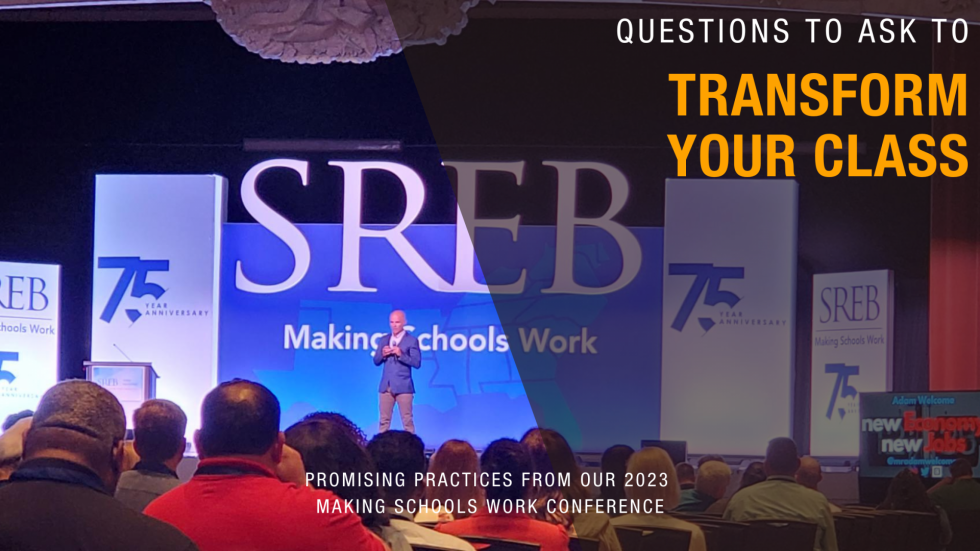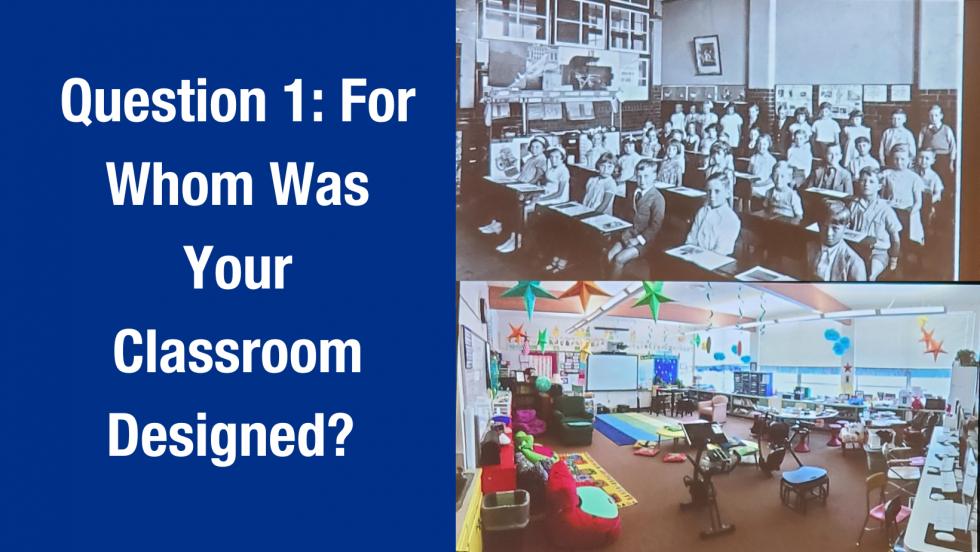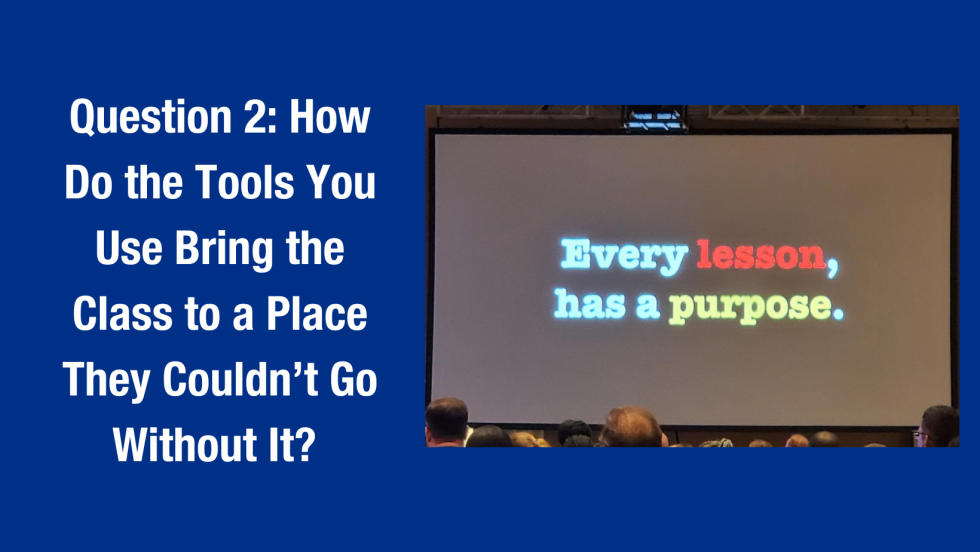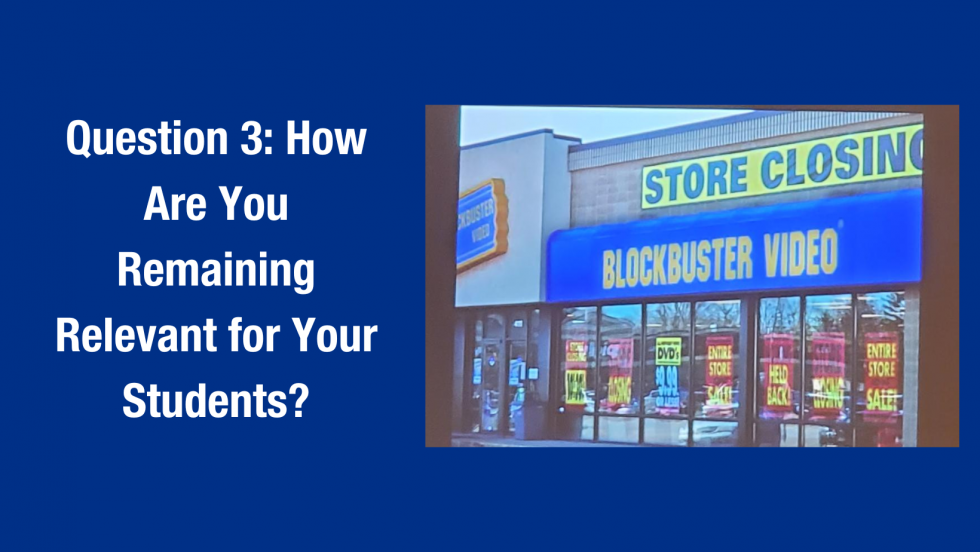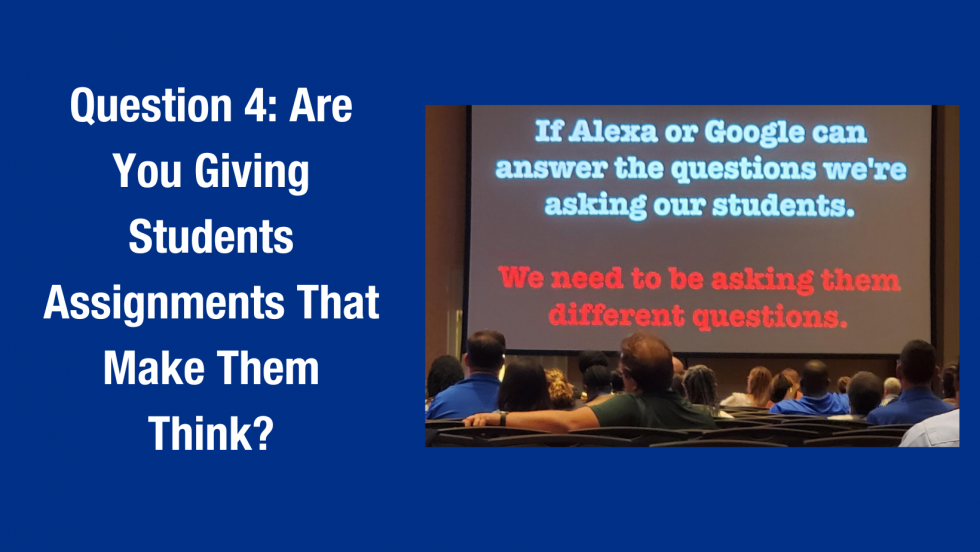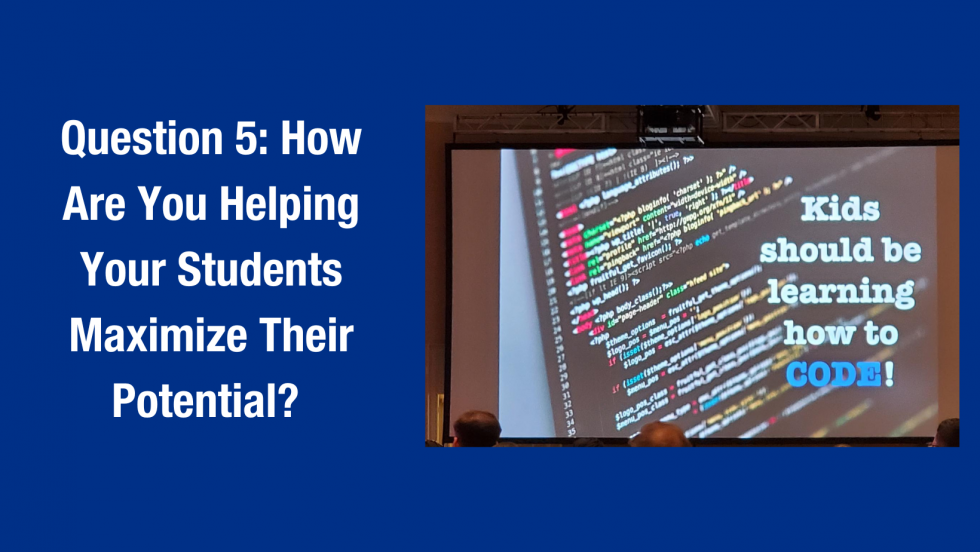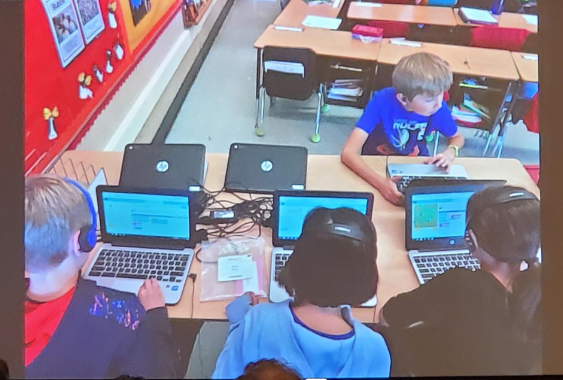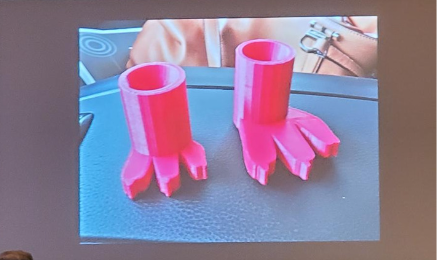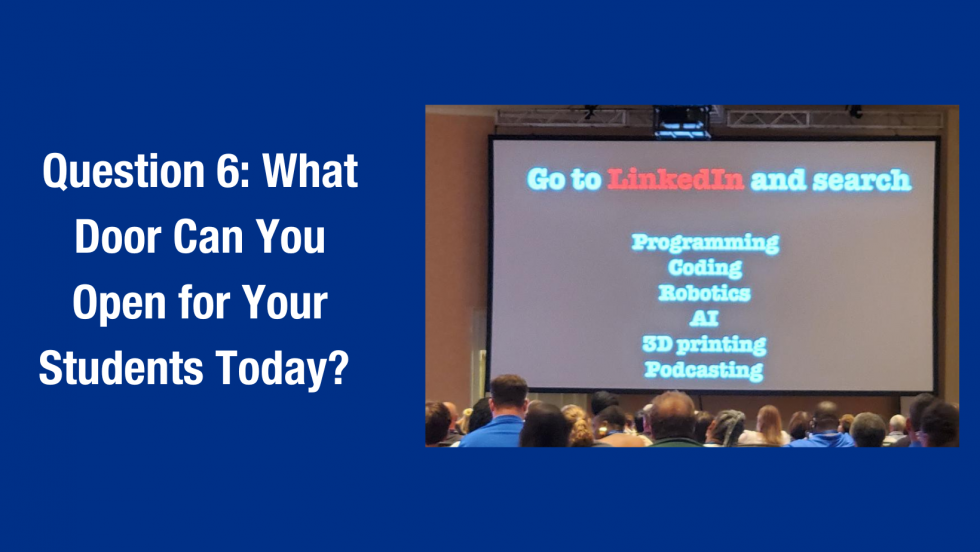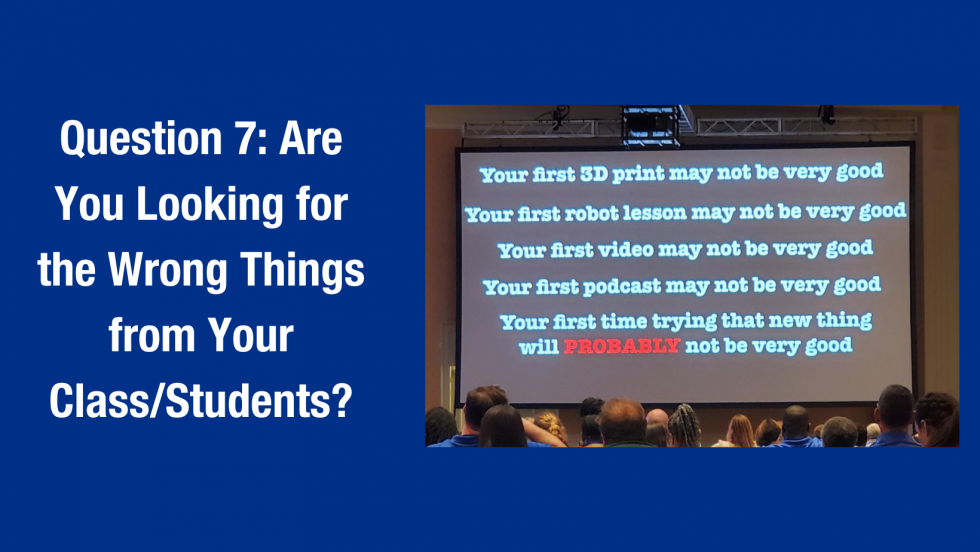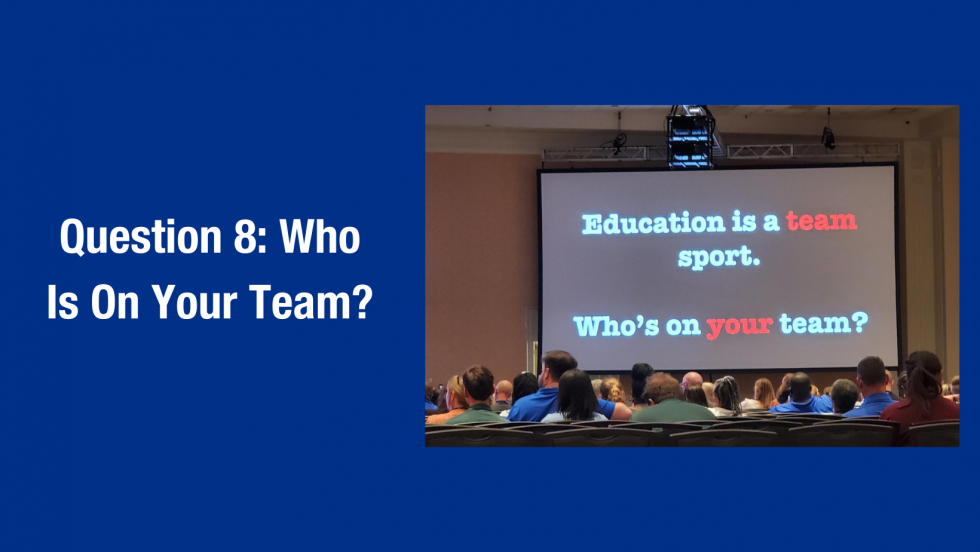New Economy, New Class: Adam Welcome Provides Questions to Ask to Transform Your Class
Prefer to listen? Check out the audio recording of this post instead.
To end this month of conference highlights that started with tips from Kevin J. Fleming and lessons from Kelsey Tainsh, I want to move to a logical ending place: the closing address, given by Adam Welcome.
Adam Welcome
Adam Welcome was a principal of the year in his California region and was named a Top 20 to Watch by the National School Board Association. He wanted to use his experience to help other teachers improve life for the kids in their classes. To do this, he founded the organization Kids Deserve It and authored four books on teaching. Now, he writes posts, hosts three podcasts and conducts speaking engagements…like the one he did at the 2023 Making Schools Work Conference.
Here is what he had to say at the conference.
8 Questions You Should Be Asking in Your Schools
One thing I took away from this session was a set of questions you can ask yourself about your teaching if you want to make sure your teaching is adaptable enough to keep up with your students’ educational needs in our ever-changing world. Here are eight of the questions that I got from Adam Welcome’s talk.
Question 1: For Whom Was Your Classroom Designed?
The second your students walk into your classroom, they learn things about you and your teaching style. You can improve your relationship with them and the way you reach them just by thinking about your classroom set-up.
You do this by asking who your classroom is designed to accommodate.
To help demonstrate this, look at the two pictures in the image above. Both of these images that Adam showed in his session are of a classroom.
If you walked into the first classroom, would you think the set-up was designed for the teacher or the student? How about the bottom picture?
I think we can all agree that the bottom, more modern classroom is going to provide a more engaging place for students to learn. And, as Adam said, the “best discipline program is an engaged classroom.” So, not only will students learn more in the bottom class, but they will also have fewer behavioral problems.
You don’t need to go out and recreate this look exactly. However, as you redecorate and move things around, just keep your students in mind. How can you create a space that will work for both you and your students?
Question 2: How Do the Tools You Use Bring the Class to a Place They Couldn’t Go Without It?
Adam talked about seeing teachers during the COVID-19 pandemic who would throw up a standard worksheet on the online classroom that they were in and call it technology use.
Technology and other tools can be a great benefit to you and your students. However, if you use something, there should be a purpose to it. It shouldn’t just be a method to conduct the same teaching methods you’ve always used in a new format.
When you invest in learning a new tool or technology, stop and ask yourself if it is adding anything to the class experience. Are you improving something for your students? Or is it just the same thing you have been doing, but online?
Strive to use new features in your classroom in a way that provides new —and hopefully improved — ways for students to learn.
Everything you do and everything you have the students do should have a purpose. If you can’t say what the purpose is, then maybe it isn’t needed.
Question 3: How Are You Remaining Relevant for Your Students?
Many of you reading this probably remember Blockbusters. For those who don’t, it was how people saw movies at home before streaming services existed.
You’d head to your local Blockbusters to rent the latest release, and then head back to return it a few days later.
However, for the most part, Blockbusters don’t exist today, and, as Adam pointed out, this is in large part because they ignored what was happening right before their eyes:
As competitors like Netflix started offering ship-to-your-home DVD rentals and then online options (eventually moving to streaming), Blockbuster stayed the same.
In your classrooms, you shouldn’t strive to be a Blockbuster. As Adam put it:
“Our schools can’t go out of business. But they can become irrelevant for our students.”
Your job may still exist even if you never make any changes, but your students will stop getting anything from you if you remain stagnant.
What are you doing to make sure you stay relevant? How are you preparing them for the world they are in now, as opposed to the world that you were in at their age?
The times are changing, and you should be too.
Let’s end this section with a great quote from Adam:
“Teach for 25 years. Please don’t teach the same year 25 times.”
Question 4: Are You Giving Students Assignments That Make Them Think?
One powerful thing that Adam mentioned is that if you are asking students questions or giving them assignments that Alexa or artificial intelligence (AI) can do, then you are assigning them the wrong work.
We live in a world where this technology exists. If they want to know the capital of a state, they can find it in five seconds. A good activity is no longer to have them memorize this information. However, maybe a better assignment is to have them figure out what political and societal motives lead to a city becoming a capital.
While there may be standardized tasks you are required to teach, there are ways to add more thought-provoking aspects to your teaching when you can control it.
I recently went to a training at the university where I teach, and someone there offered a potential way for instructors to use AI: Feed it your prompts and see what it does. Can it do the assignment itself? Does it do a good job with it?
This not only helps you recognize AI-use by your students, but it also helps you see if you are creating assignments that do not require enough human touch, such as critical thinking, empathy, etc. I teach composition, but similar versions of this can be done no matter what you teach.
Could Siri pass your test? Can an algorithm solve your problems?
If the answer to these questions is yes, then you may want to adjust what you are doing.
Question 5: How Are You Helping Your Students Maximize Their Potential?
If you let them, it will amaze you what your students can do. However, when you do the same old things you’ve always done – have them make flashcards, do a worksheet, etc. – then they’ll never have to exert themselves enough to show you what they are capable of.
Think about new things you can teach your students that will improve their learning experience or new ways you can teach your original lessons.
One way Adam recommends this is through coding lessons. He says every student should learn to code. (P.S., this is something I happen to tell my own students, so I have a bias in sharing this part of his talk.)
He recommends code.org, while I often recommend w3schools.com to my students. (For my composition purposes, I tell them it’s really useful for anyone seeking a job in the communications/marketing/English-major jobs fields to learn basic HTML and CSS in order to market their digital content skills, which is w3schools can help with. However, for higher level coding skills and programming, I’d go with Adam’s recommendation.)
The beauty of all of these free coding tools is that you don’t have to know how to code yourself in order to have a lesson on it in your classroom. It’s an enjoyable skill that can be done independently and will benefit students for years to come.
Let them show you how it’s done for once!
Other activities you might try:
- Robotics
- Spiros
- Free Google certifications
- 3d-printing
- Project-based learning
No matter what you teach, you can find ways to bring in these challenging but fun lessons.
Question 6: What Door Can You Open for Your Students Today?
Along with encouraging them to reach their full potential, it’s important to help your students gain advantages and opportunities with what you teach them.
Think about how the job market has changed and how it will keep changing. Things like AI, robots, etc., are taking over. What could you teach them that could set them on the path towards these careers?
One way to get ideas for this is to go on LinkedIn and search for things like “robotics,” “AI,” “podcasting,” etc. See how many job openings there are, what skills students need to get those jobs and where they can do these jobs (hint: with remote work, they don’t always have to be city kids to get these opportunities). With this knowledge, see what you could be doing in your class to help them develop interests and skills that could lead them to these careers.
Question 7: Are You Looking for the Wrong Things from Your Students?
One of the last things that Adam pointed out in his talk was that students don’t need a 4.0 GPA to be successful.
Don’t worry about perfection. Trying new things will lead to some struggles along the way. The struggle is part of the journey. You’ll get there. If you feel like everything must go right at all times, then change is going to be hard. If you care more about the journey of learning and improving, then growth will happen eventually.
Question 8: Who Is on Your Team?
You can’t do this alone. Make sure you bring in the support from your work team. However, don’t forget about your most important team—your family. Don’t burn yourself out and neglect them. Taking care of yourself and the people you love will make you a better teacher for your students.
Key Takeaways
If you want to see your classroom blossom into one that will engage and inspire your students, start by asking yourself these questions from Adam Welcome.
For more tips like these, make sure you sign up for our Promising Practices Newsletter.
Subscribe to Promising Practices


